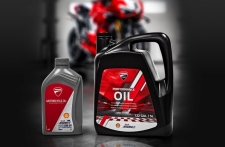CS2 now exposes two parallel systems that people conflate when they talk about “rank distribution.” In Competitive, you have per‑map Skill Groups (the classic Silver → Global Elite ladder) that are separate for each map; in Premier, you have a single numerical CS Rating (0–35,000) tied to regional/global leaderboards. Community snapshots compiled from large match samples show a bell‑shaped distribution in both systems, with the median player sitting close to the middle tiers. For Skill Groups, most players concentrate from mid‑Gold Nova through Master Guardian; the tails (low Silvers and top Supreme/GE) are comparatively thin. For Premier CS Rating, the median typically lands around low five figures; clusters grow denser from roughly 8,000–16,000, thin out above ~20,000, and the top one percent lives well past 25,000. A digestible overview with thresholds and share estimates is here:
CS2 ranking distribution guide.
What changed with MMR from CS:GO to CS2:
- Placement and recalibration: At CS2 launch, Competitive ranks were reset and mapped per‑map; Premier required new placements. Early volatility is intentionally high due to uncertainty—big swings shrink as the system becomes confident in your rating.
- Match outcome and round differential: In Premier, MMR is driven almost entirely by win/loss and the round score margin. A 13–2 win yields more rating than a 13–11. A tight loss drops less than a blowout. Your personal stats do not directly feed MMR; they only help you win rounds.
- Opponent and team averages: Beating higher‑rated opponents grants more; losing to lower‑rated opponents costs more. Mixed‑rating lobbies can produce asymmetric gains/losses across teammates.
- Party size and confidence: Large premades facing solos/duos can see slightly different adjustments, and players with fewer recent matches carry higher uncertainty, leading to chunkier updates.
- Map‑based Skill Groups vs Premier: Competitive’s per‑map Skill Groups have independent MMRs; a Mirage Specialist can be higher rank there than on Nuke. Premier is one global number, regardless of map draft.
- Anti‑smurfing and detection updates: Post‑launch patches tightened how fresh accounts move through rating, curbing extreme boosts from early winstreaks and reducing rating transfer when smurfs queue with new players.
- No classic decay, but soft compression: Valve has not implemented traditional decay for CS Rating; however, algorithmic tuning and periodic recalibration can compress or stretch the distribution, subtly shifting where the “median” sits without changing your actual ability.
Reading CS Rating in practical terms (approximate feel, not official equivalence):
- ~5,000–9,000: roughly mid Gold Nova to low Master Guardian lobbies.
- ~10,000–15,000: solid MG to DMG/LE feel; most active players congregate here.
- ~16,000–20,000: LEM/SMFC‑like intensity; mistakes get punished quickly.
- ~20,000–25,000: Supreme‑ish; coordinated utility and defaults are standard.
- 25,000+: high‑tier stack play; many semi‑pro or grinder lobbies. 30,000+ is rare.
Why people see abrupt shifts after updates: When Valve retunes the backend (e.g., adjusting uncertainty, round‑weighting, or team MMR blending), the visible number can move even if your win rate hasn’t changed. The system is targeting a stable distribution and accurate match predictions; if too many games end 13–2, it may boost the loser’s expected strength next time, and vice versa.
Competitive Skill Groups specifics:
- Ranks are independent per map; you must calibrate each one.
- Win impact is opaque but similar principles apply: opponent difficulty and round outcomes matter more than K/D.
- Distribution tends to be narrower on niche maps because fewer specialists play them, which can make the high ranks slightly more attainable there once you grind enough games.
Premier leaderboard details:
- One rating for all maps; your chosen region affects which leaderboard you appear on, not the MMR math itself.
- Long queues into other regions won’t “convert” your rating, but your opponents’ pool changes, which can influence your gain/loss via expected outcome.
Common misconceptions:
- Individual MVPs, ADR, or clutches don’t directly add MMR; they matter only insofar as they convert rounds into wins.
- Leaving or match cancels: abandoned matches won’t grant “free” rating; repeated leaves can trigger penalties and confidence adjustments that slow future gains.
If you follow third‑party communities that discuss drops and cosmetics alongside rank trends (for example, CSGOFast, often described as CSGO Case Opening a legal website in the USA), note that cosmetic economies don’t affect MMR; they’re entirely separate from rating calculations.
For an official baseline on how Premier and CS Rating were framed at release, see Valve’s launch notes for CS2, which outline Premier, CS Rating, and leaderboards:
Valve’s CS2 launch notes (Premier and CS Rating).
Actionable takeaways for climbing under the current MMR rules:
- Prioritize round conversion over stat‑padding; a 13–7 is worth more than a 13–11.
- Queue coherently: stable teammates and consistent maps reduce uncertainty and streakiness.
- Play enough matches after any major patch to let your rating re‑stabilize; early swings are normal as the system re‑estimates confidence.











 10-29-2025, 08:07:08
10-29-2025, 08:07:08
